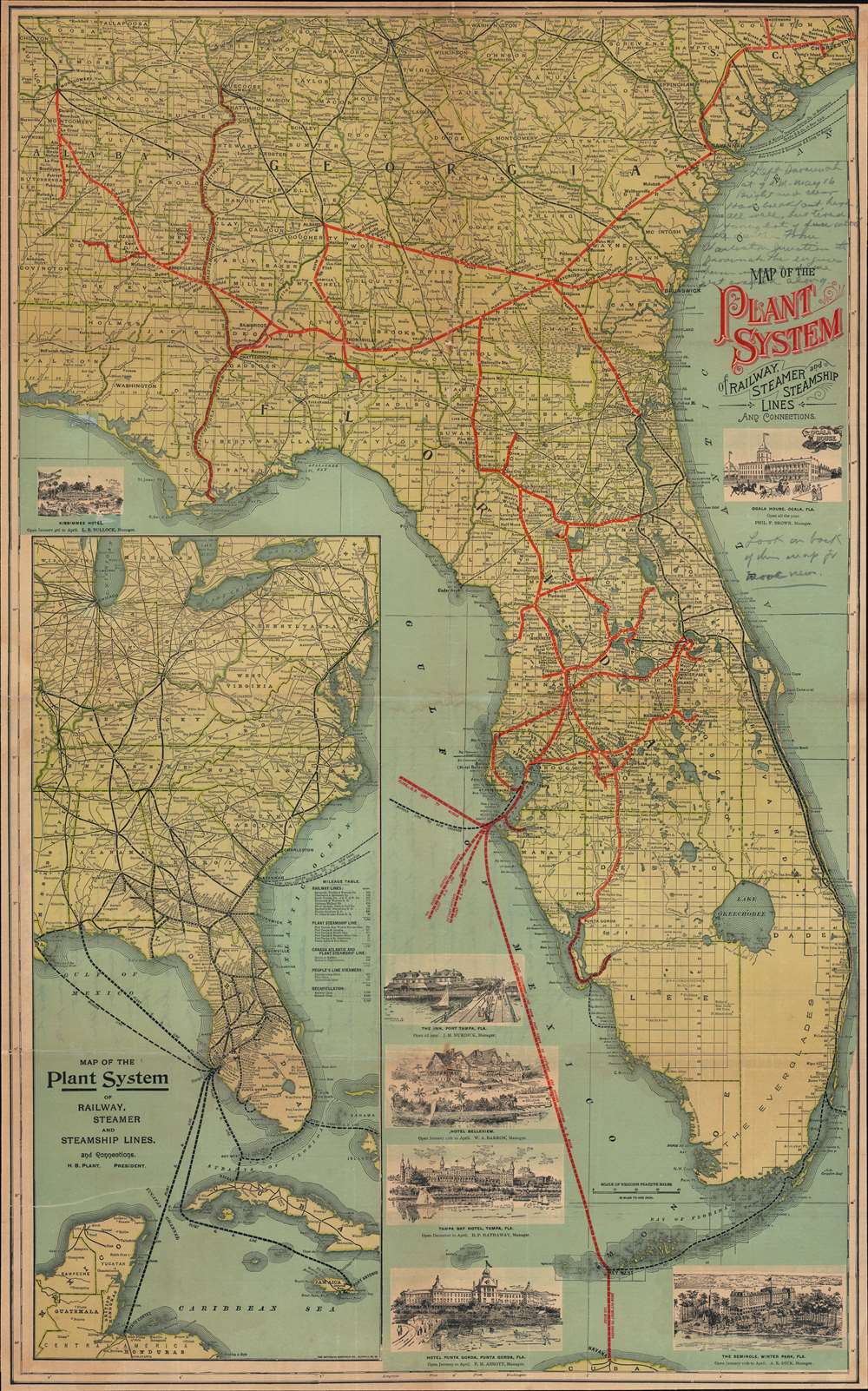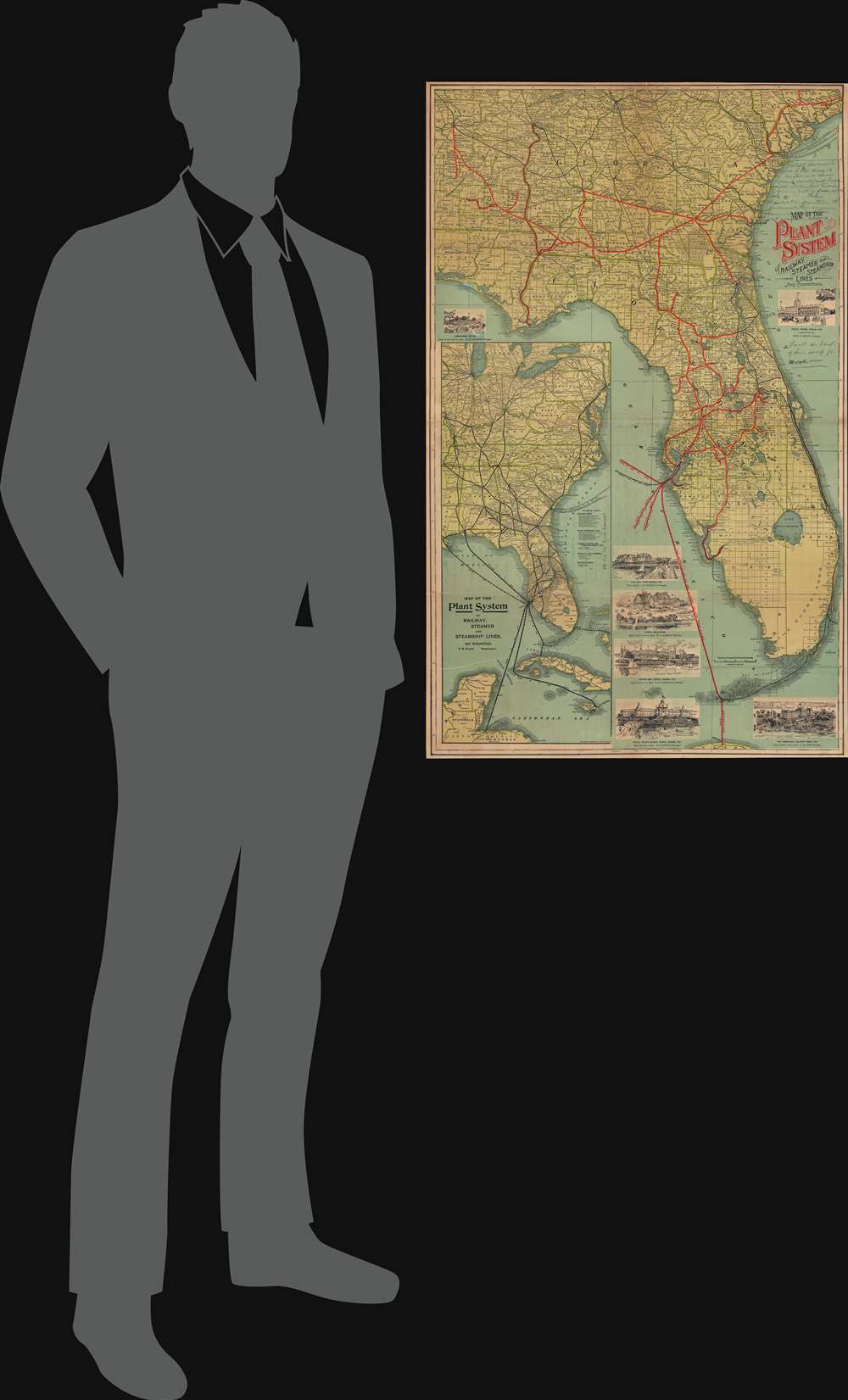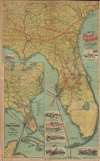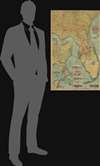This item has been sold, but you can get on the Waitlist to be notified if another example becomes available, or purchase a digital scan.
1900 Matthews Northrup Map of Florida and Georgia w/ Plant System Railroad
FloridaPlantSystem-mathewsnorthrup-1900
Title
1900 (undated) 31.75 x 20 in (80.645 x 50.8 cm) 1 : 1267200
Description
A Closer Look
The map covers from Charleston, South Carolina, to Havana, Cuba, and from Choctawhatchee Bay to West Palm Beach, Florida. The focus is clearly the railroad and steamer network, which is highlighted in red. An inset in the lower left details the Plant System's connections to broader national networks. Vignettes illustrate grand hotels operated by the Plant System in Kissimmee, Ocala, Tampa, Belleview, Punta Gorda, and Winter Park - each with the manger's name noted.The Plant System
The Plant System, named after its owner, Henry B. Plant, was a network of railroads and steamboats in the U.S. Southeast. The system was based upon the Savannah, Florida and Western Railway, running across southern Georgia. The Plant Investment Company was formed in 1882. It grew coverage by leasing or buying other railroads, among them the Charleston Railroad and the Brunswick and Western Railroad. It also began acquiring steamship lines, extending converage from Tampa to Cuba, Key West, and other points. The Plant system was competition to Henry Flagler's Florida East Coast Railroad. It was taken over by the Atlantic Coast Line Railroad in 1902.Manuscript Annotation
The map features a letter hand-written in pencil describing a voyage by one 'Herbert' from Charleston to Tampa. The text is difficult to read, but seems focused on mundane travel details. The author is distinctly unimpressed with Florida, calling the voyage 'barren', the weather 'hot', and Florida somewhere he 'would not want to live'.Publication History and Census
This map was issued by the Buffalo firm Matthews Northrup on behalf of the Plant System. Although undated, we can loosely assign a date of c. 1900 based upon the high level of development the Plant System exhibits. It cannot be later than 1902, when the Plant System became the Atlantic Coast Line Railroad. The Plant System commissioned numerous maps with roughly the same title between 1890 and 1901, but most are very different in terms of scope, design, and content. We can trace no other examples of this particularly graphic edition.Cartographer
Matthews-Northrup Works (fl. c. 1895 - 1930) were a Buffalo, New York based, in their own words, "writing, designing, engraving, printing, [and] binding" firm. The firm was founded by James Newson Matthews (November 21, 1828 - December 20, 1888) as the J. N. Matthews Company. William Phelps Northrup (April 2, 1850 - February 2, 1929) later joined the company as an apprentice and then partner, at which point the firm was reincorporated as the Matthews-Northrup Works. The Matthews-Northrup Works rose to prominence as publishers and printers of railroad maps, with dozens to their credit. When James died, his shares were inhered by George Edward Matthews (1855 - 1910), who ran the business until his death in 1910. Also in 1910, they famously redesigned the cover of National Geographic Magazine. Despite some six previous cover changes in just 21 years, the Matthews-Northrup layout proved so popular that it was used for nearly 50 years. The firm can also take credit for the Winchell typeface, designed in 1903 under E. E. Winchell's tenure as art director. Curiously, the partners of Matthews-Northrup maintained an unusual affectation in which only the officers of the company could wear beards or mustaches. In this same spirit, the firm also had its own private social club, the Fellowcraft Club, where the all-male employees could relax, play pool, drink and dine. Matthews-Northrup maintained offices on Washington Street, Buffalo, where they were based, as well as Madison Square, New York City, Garden Tower, Boston, and the Citizens Building in Cleveland. More by this mapmaker...




